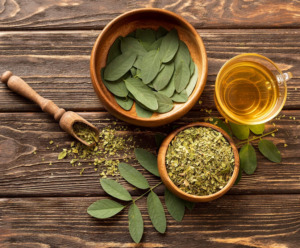Ayurveda is India’s ancient system of healing that has been trusted for thousands of years. It uses natural herbs, minerals, and oils to help the body heal and stay balanced. But when we talk about Ayurvedic products, you may hear two important terms: Classical (Shastrokta) and Proprietary (Anubhuta) formulations.
What Are Classical (Shastrokta) Formulations?
“Classical” or “Shastrokta” means based on the scriptures. These are formulas that are already written in ancient Ayurvedic texts like the Charaka Samhita, Sushruta Samhita, Ashtanga Hridaya, and others. These medicines have been used for hundreds or even thousands of years.
Key Features:
- Mentioned in Ancient Books: The recipe and ingredients are taken exactly as written in traditional Ayurvedic texts.
- Time-Tested: These formulations have been used successfully for many years.
- Standard Names: Products like Triphala Churna, Ashwagandha Churna, Brahmi Vati, Panchamrit Parpati, Mahayograj Guggulu, and Bhasmas fall under this group.
- Used by Vaidyas (Ayurvedic Doctors): These are commonly prescribed in Ayurvedic hospitals and clinics.
Example: Chyawanprash is a good example. The formula is written in ancient books and followed even today.
What Are Proprietary (Anubhuta) Formulations?
“Proprietary” or “Anubhuta” means new formulations created by experts, based on their experience and knowledge. These are not directly written in the old books but are made by combining different herbs to solve specific problems like hair fall, stress, or digestion.
Key Features:
- Not in Ancient Texts: These formulas are not copied from scriptures but are developed by Ayurvedic companies or experts.
- Modern-Day Solutions: They are made to help with current lifestyle problems like stress, pollution, and unhealthy diets.
- Unique Combination: The herbs used are known in Ayurveda, but the way they are mixed is new.
- Need License Approval: These products are regulated by AYUSH and need approval before selling.
Example: A modern herbal capsule for PCOS or a juice mix for immunity using Amla, Tulsi, and Giloy in a new ratio can be called proprietary.
Major Differences at a Glance
| Feature | Classical (Shastrokta) | Proprietary (Anubhuta) |
|---|---|---|
| Based On | Ancient texts (Samhitas) | Expert innovation and modern research |
| Formula | Fixed and time-tested | Flexible and newly developed |
| Use | Mainly by Ayurvedic practitioners | For general wellness or specific needs |
| Examples | Triphala, Bhasmas, Arishtas | Anti-stress tablets, herbal teas, detox juices |
| Licensing | Requires mention in texts | Requires approval under AYUSH proprietary laws |
| Purpose | Traditional treatments | Modern-day wellness and lifestyle support |
Why Both Are Important
At UMA Ayurveda, we believe in the strength of both systems.
- Classical medicines show the power of tradition. They are trusted, tested, and rooted in history.
- Proprietary medicines show the power of innovation. They are created to suit modern people and modern problems.
A good Ayurvedic company uses both kinds to give complete health support to everyone, from doctors to everyday users.
Final Thoughts
If you’re choosing an Ayurvedic product, it’s helpful to know if it is a Classical or Proprietary formulation. Both are safe and effective when made with care and quality. It just depends on your needs.
- Want a traditional solution for digestion or joint pain? Go for a Classical product.
- Want a new blend for immunity, hair care, or stress relief? A proprietary product may suit you better.
Always buy from trusted manufacturers like UMA Ayurveda who follow proper quality, licensing, and testing.


